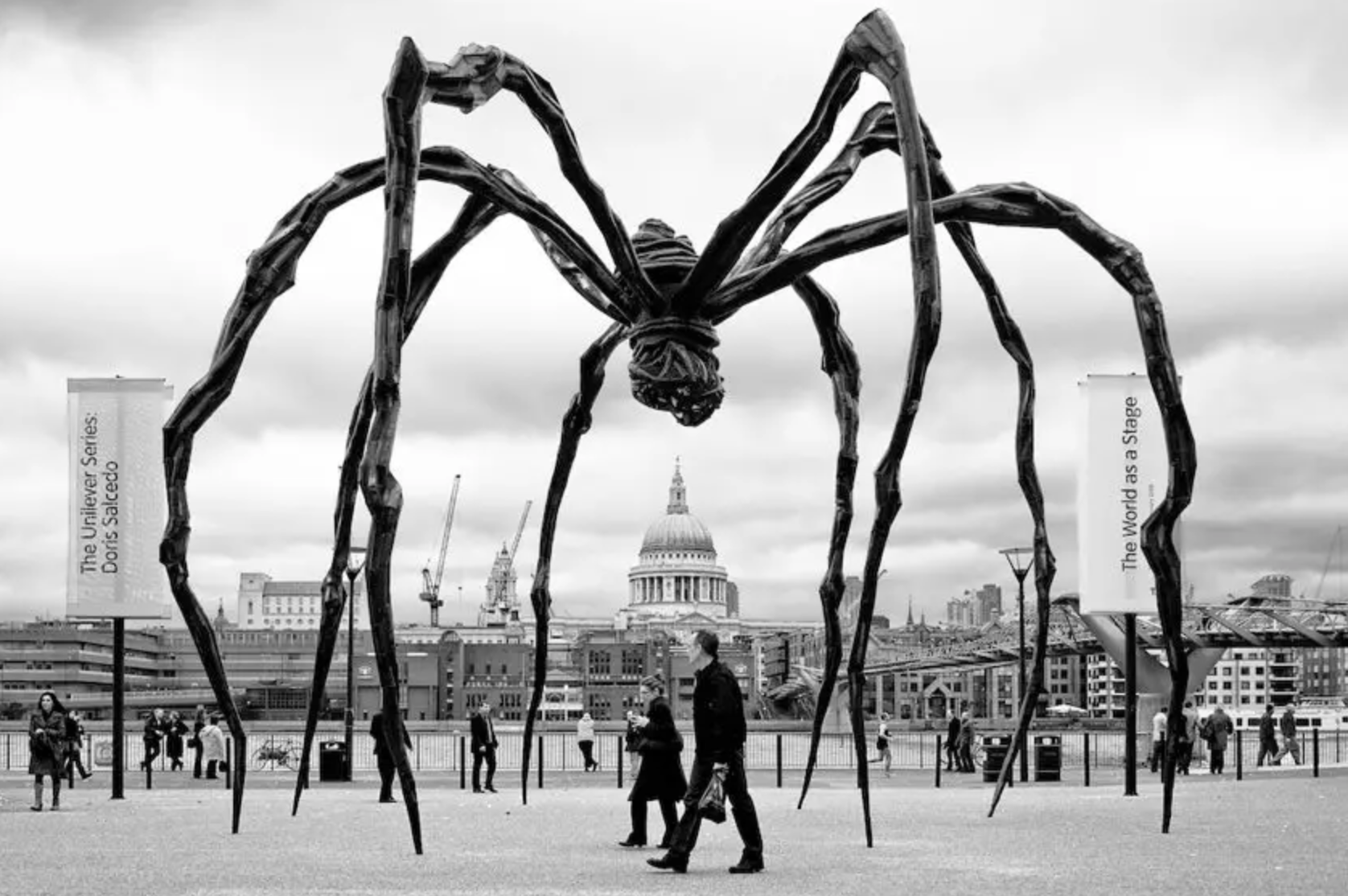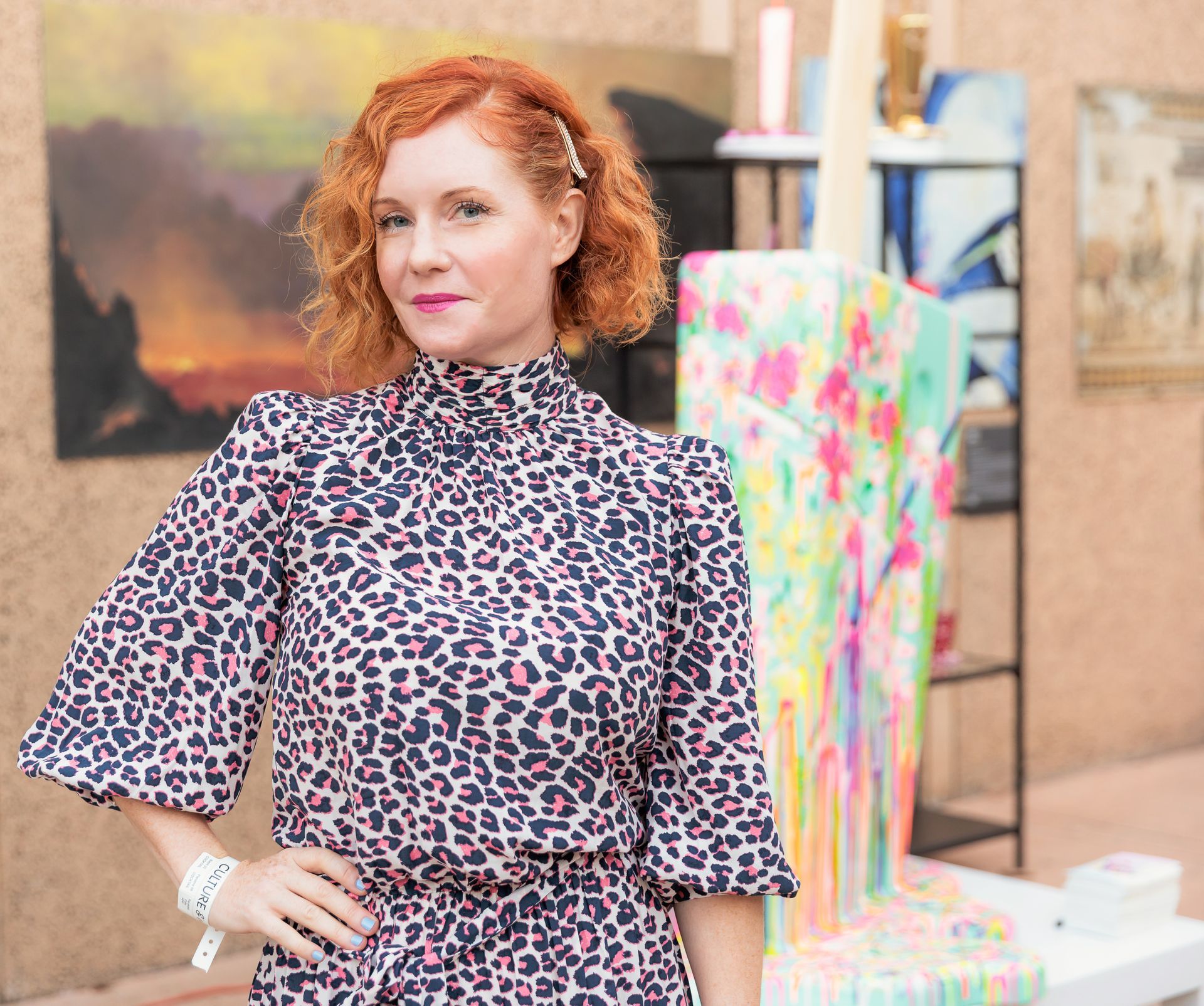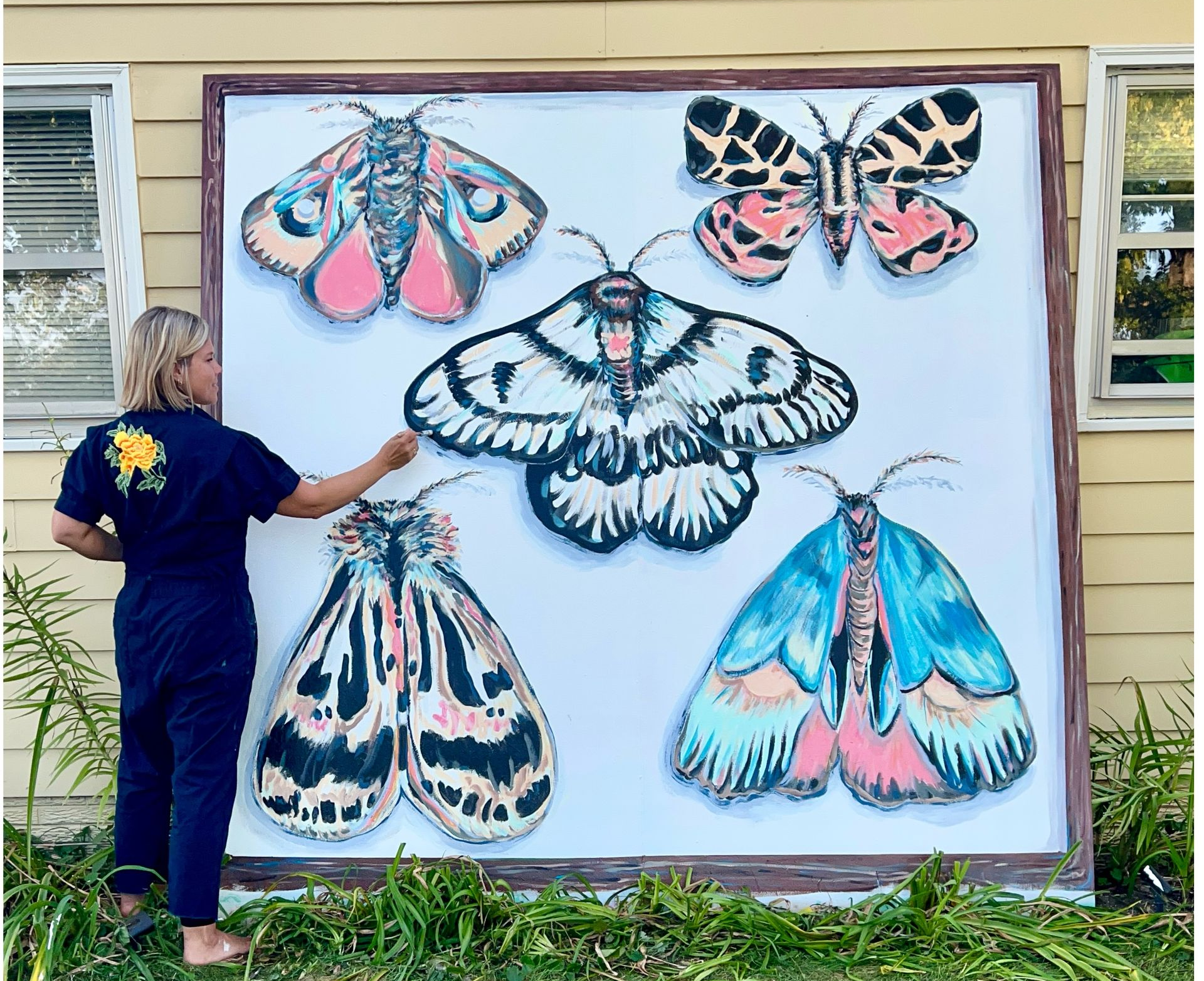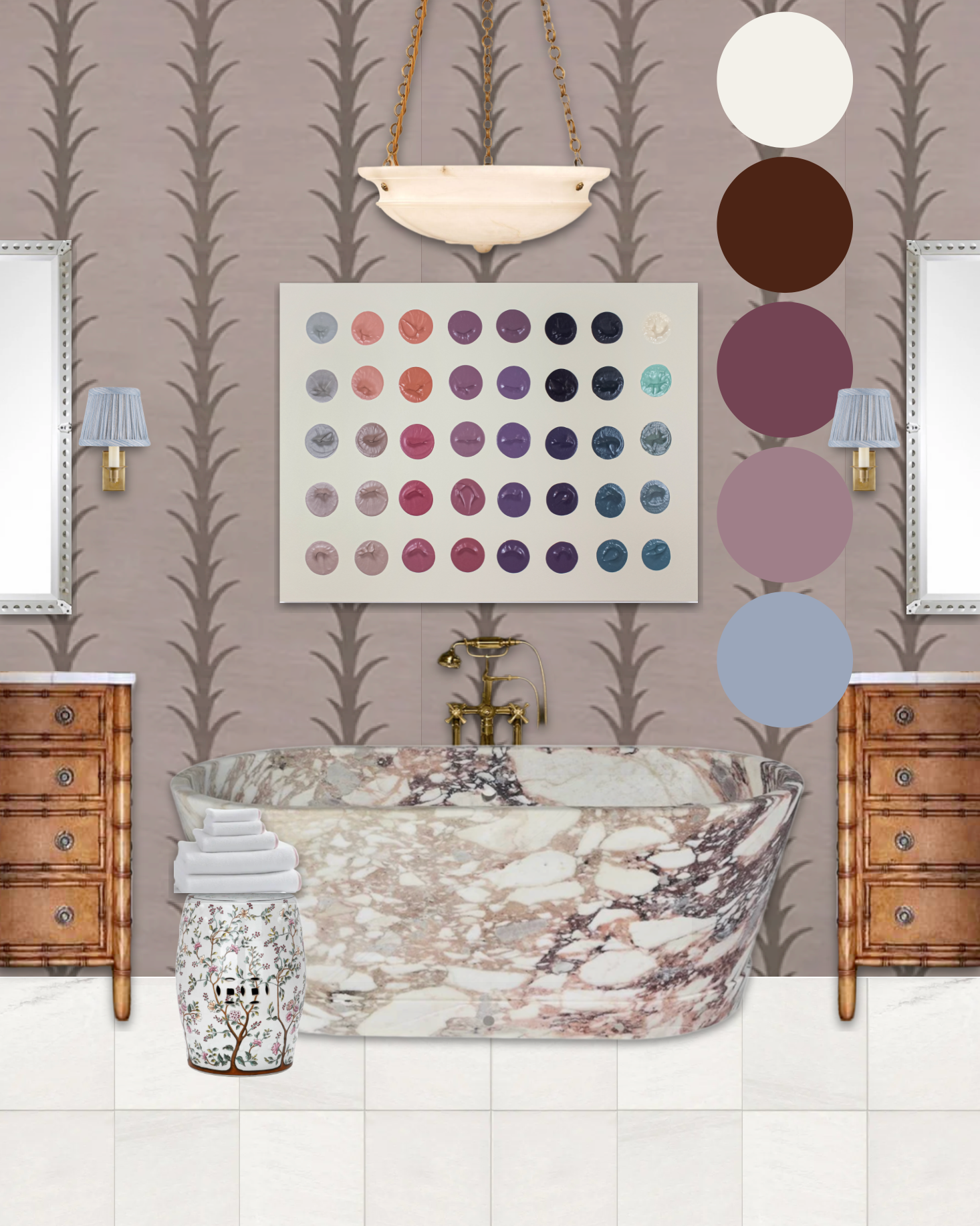Ten Minute Masterpiece: Spiders
In this episode, we focus on the work of one French-American sculptor Louise Bourgeois. Her eighty year career explored lifelong themes of childhood, motherhood, and family identity.

Louise Bourgeois’s Spider sculptures are an ode to her mother — the spider series became the centerpiece of the last chapter of her life.
Louise Bourgeois returned again and again to the image and symbol of the spider in her work. Her spider sculptures can be seen in museums and public spaces around the world.
Spiders features Liz Lidgett and artist Betsy Enzensberger. Ten Minute Masterpieces is hosted by art advisor Liz Lidgett and produced by Maribeth Romslo.
Click this link for photograph: Spider (1997) by Louise Bourgeois at the Pappajohn Sculpture Park in Des Moines, Iowa.
Click this link for photograph: French-American artist and sculptor Louise Bourgeois photographed in her studio in the Chelsea, Manhattan, 1982. (Photo by Jack Mitchell/Getty Images)
Click this link for photograph: An edition of Louise Bourgeois's Maman at the Guggenheim Museum in Bilbao, Spain. LUIS TEJIDO/EPA-EFE
Click this link for photograph: Maman by Louise Bourgeois, 1999, via Guggenheim Bilbao (left); with Louise Bourgeois inside her articulated air at the MoMA, 1986, via The Guardian
Click this link for photograph: Bourgeois photo credit Bruno Nasatti
Click this link for photograph: Plate 8 of 9 from the illustrated book Ode à Ma Mère, 1995 Drypoint. Page: 11 13/16 x 11 13/16″ (30 x 30 cm). Photo: Digital Image © MoMA, N.Y.
Click this link for photograph: Bourgeois’ art was fueled by her need to exorcize the anxiety and the anguish that took root in her early childhood.Photograph by Mathias Johansson

Transcript:
Liz Lidgett 0:01
Welcome back to Ten Minute Masterpieces where we explore curious stories behind the world's most renowned works of art. I'm Liz Lidgett, and I'm an art advisor and gallery owner in Des Moines, Iowa.
Liz Lidgett 0:11
In this episode, we are focusing on the work of one of my favorite sculptors — French American artist Louise Bourgeois. Born in Paris in 1911, Louise Bourgeois grew up in her parents' antiques and tapestry restoration shop. As a young girl, she honed her artistic skills, making drawings of lost sections of tapestry as a template for the stitching repairs to follow. When Louise was a teenager, her mother contracted the Spanish flu, a disease from which she never really recovered. During her mother's illness, Louise's father took the family's British au pair as a mistress, the entangled family situation left Louise feeling abandoned and betrayed by her father.
Liz Lidgett 0:56
Shortly after Bourgeois’ mother died in 1932, Louise entered the Sorbonne to study mathematics and geometry. However, she quickly abandoned her studies and turned to art, earning a living by giving guided tours at the Louvre. In 1938, she opened her own gallery space, where she showcased the work of artists such as Henri Matisse and Eugene Delacroix. American art professor Robert Goldwater became a customer of her gallery. They fell in love, married and moved to the United States, where Louise Bourgeois spent the rest of her life.
Liz Lidgett 1:29
In 1945, Louise was featured in an exhibition of fourteen women artists at Peggy Guggenheim's gallery. Her early pieces were carved sculptures from pieces of driftwood combined with junkyard scraps. Bourgeois had mixed feelings about the exhibit, because while it brought attention to women artists, it also defined them as separate from their male counterparts. Bourgeois became friends with many of New York's most celebrated artists including Willem de Kooning, Mark Rothko and Jackson Pollock. She joined the American Abstract Artists Group, and started exploring marble, plaster and bronze as materials on a larger scale, all while exploring themes of fear, vulnerability and loss of control.
Liz Lidgett 2:09
In the late 1960s, her imagery became more sexual as she explored the relationship between men and women, and the emotional impact of her troubled childhood. While Bourgeois was very connected in the New York art world, her work didn't receive wide acceptance or acclaim until the 1970s. A retrospective of her work opened at the Museum of Modern Art in 1982 when Louise was 71 years old. It was momus first exhibition devoted to a female sculptor.
Liz Lidgett 2:38
Bourgeois’ arachnid forms appeared in the few ink and charcoal drawings she made as early as 1947. But her sculptural series of Spiders took her early sketches to a monumental level in the 1990s. The spider represents creativity and industry. Like Bourgeois’ mother, the spider is a weaver. Louise described her mother as deliberate, clever, patient, soothing, reasonable, dainty, subtle, indispensable, neat and as useful as a spider. Louise Bourgeois' Spider sculptures are an ode to her mother. The spider series became the centerpiece of the last chapter of her life. Bourgeois' Spiders are sized to make the viewer feel small, and yet also protected beneath its shelter.
Liz Lidgett 3:24
In 1994, bourgeois installed her first large scale Spider at the Brooklyn Museum. As she approached her 90th birthday in 1999, Bourgeois created a 30 foot tall spider for the grand opening of the Tate Modern Art Museum in London. The towering spider is titled Maman, and is her largest sculpture in the series. Visitors to Maman can navigate under the eight legs of the steel spider and look up at its body which carries a sack of marble legs. Louise Bourgeois returned again and again to the image and symbol of the spider and her work. Her Spider sculptures can be seen in museums and public spaces around the world. We even have one of her smaller Spiders, which stands about eight feet tall in Des Moines at the Pappajohn Sculpture Park, right down the street from the gallery.
Liz Lidgett 4:10
Here to talk about Louise Bourgeois spiders is Liz Lidgett Gallery artist Betsy Enzensberger. Betsy is based in Palm Springs and is known for her whimsical larger than life resin sculptures of melting ice cream treats. I'm excited to share here with you some of our recent conversation about Louise Bourgeois' Spiders, what it means for an artist to focus on a theme, and more about Betsy's artistic process.
Liz Lidgett 4:33
Betsy, thank you so much for joining us on the podcast today. I'm so excited to have a sculptor here to talk about sculpture.
Betsy Enzensberger 4:42
Thanks for having me.
Liz Lidgett 4:43
You were just in Des Moines a few weeks ago for our show that had your work in it. And we went down to our local sculpture park and you and I spent time at the Spider. We were there together looking at it and in the underbelly of our particular spider, there is an open area that has been caged in shows where the spider holds its eggs. And it's like this mothering nurturing portrait. And a bird had made its nest there and had found shelter in this sculpture and that exact part. And you said something to me, it was like nature always knows.
Betsy Enzensberger 5:23
Yeah, you see this little happy bird and it's comforting nest. And it's like exactly what Louise was trying to portray.
Liz Lidgett 5:32
You know, what attracts an artist to a specific image and you want to keep diving into that?
Betsy Enzensberger 5:38
Well, for me, the shape of the ice pop, which was what I chose, was this internationally recognizable shape that is associated with reward, treat, happiness, joy. And all over the world, you find something similar to this in, you know, different flavors and shapes, of course, but you know, ice cream on a stick, I'm definitely drawing from childhood — hot summer days, when your feet are burning on the pavement and getting really, really excited every time I heard the chimes of the ice cream truck. But for me, it's more the connection between people, connecting people over this one simple object. It's not just nostalgia.
Liz Lidgett 6:22
My perspective, as someone who has the honor of repping your work, is that people are so drawn to it, they really want to get up close.I I joke all the time, that your work is the reason we have to clean off nose prints from our windows on a regular basis.
Betsy Enzensberger 6:42
Oh, that's great.
Liz Lidgett 6:44
We have so many videos from our like security feed of people just really smashing their noses trying.
Betsy Enzensberger 6:51
Oh, I want to see that. That's amazing. We should make a Reel. But it's great to know that people want to get up close, because I do spend a lot of time on the details. So I want people to enjoy that. And I don't just create these things lightly. I I spend a lot of time with each piece making it what it is. It doesn't happen by accident.
Liz Lidgett 7:13
Would you just tell us a little bit about the process in the materials because I think that's so interesting to hear you talk about.
Betsy Enzensberger 7:18
Oh, yeah, resin, it's a joy. And it's also a nightmare. It's a really complicated thing to work with. Because you need to be up close, you need to manipulate it with your hands, but you can't really touch it or breathe it. So you need to keep your distance and I'm not the most patient person. So if I could have it dry faster, I would love that. But I wait and I'm patient. And maybe that's the only thing I'm patient for really. I have patience for resin. I love the challenge of it. I love that I go in and I'm like sweating and creating all this dust and you know, and then out from the dust comes this shiny popsicle. And you know, it looks like oh, so easy. So pretty. And what it took to create that was not pretty. I worked with power tools all day. I work with automotive tools, Sanders and polishers and automotive paints. And, you know, you look into my studio, and then you can go across the street to the auto repair place, and they have the exact same equipment. So I walk out from my studio and I, you know, I take all my gear off, and I'm just like, hey, to all the guys working on cars next door. I'm like, Yeah, I can do the same thing as you.
Liz Lidgett 8:37
Betsy, thank you so much for your time and for chatting with us. It's been such a pleasure.
Betsy Enzensberger 8:43
Oh, that was fun.
Liz Lidgett 8:44
Thank you so much for all of your insight.
Betsy Enzensberger 8:46
Anytime.
Liz Lidgett 8:48
When Betsy and I visited the spider in Des Moines, it was so special to experience public art together. And it's really interesting to then hear more in our conversation about how Betsy felt she couldn't even walk underneath the Spider because of the powerful emotions that the sculpture was making her feel. Part of the reason I love Louise Bourgeois' Spiders so much is that at first her sculptures appear to be these giant looming metal creatures. You might think her Spiders are something scary out of a Tim Burton film, towering above you. Eight spindly metal legs holding up an elegant knot of coiling forms. But as you learn more you understand that Louise's spiders are powerful protectoresses, delicate weavers, and fierce mothers who are both vulnerable and strong.
Liz Lidgett 9:31
Bourgeois’ 80 year artistic career is a study in excavating memories and feelings and turning them into art. Louise's body of work, including her Spiders, explores deep autobiographical themes — motherhood, femininity, betrayal, fear, sexuality, loneliness, the body, memory, and healing from childhood trauma. I'm struck by how Louise's life is a testament to art as a lifelong practice. Something from which artists don't ever really retire. For the last 30 years of her life she hosted weekly Sunday afternoon artist salons at her brownstone in Chelsea. Artists would fly in from all over the world bringing their work for unflinching critique and conversation with Bourgeois. She created artwork until the very end of her life when she died in 2010 at the age of 98.
Liz Lidgett 10:22
To close this episode, I'd like to leave you with the voice of Spider Woman herself. Here's Louise Bourgeois and the 2008 documentary The Spider, The Mistress and The Tangerine.
Louise Bourgeois 10:34
I go back and I unwind the past. And you can see by the work there is a sequence to your work which is visible in the aspect of the weight of pieces look. And they go on and on like that. The materials are not the subject of the artist, the subject of the artist is emotions and ideas, both. The sculpture is a problem to be resolved, and it is a pleasure to find a solution, right? After you have found the solution, well you let go of the object. So that the purpose of sculpture is really self knowledge. Know yourself in order to be happy.
Liz Lidgett 11:31
Ten Minute Masterpieces is a production of Liz Lidgett Gallery and is produced by Maribeth Romslo. Special thanks to Betsy Enzensberger. Check out our Show Notes for credits to this episode and links to more info about Louise Bourgeois and her Spider sculptures. Join us next time when we take a look at Grant Woods' American Gothic. Until then, I hope you take ten minutes and look at some art today. You might just discover your favorite masterpiece. to Ten Minute Masterpieces where we explore curious stories behind the world's most renowned works of art.
LISTEN TO THE EPISODE
https://www.lizlidgett.com/podcast
CREDITS
- Premium Beat: Creative Morning
- Epidemic Music: Until the End , Frontiers are Where You Find Them , Finnish Friendship , Alone in Paris , The Spider, The Mistress, and the Tangerine Documentary
RESEARCH AND LINKS OF INTEREST
- Art News "Louise Bourgeois Spider Sculptures History"
- Bourgeois' Spiders at Tate Modern
- CNN "Why Louise Bourgeois made her iconic spider sculptures"
- The Collector "Why Did Louise Bourgeois Make Spider Sculptures?"
- Spiderwoman Documentary
- TateShots // Louise Bourgeois – 'I Transform Hate Into Love'
- ArtSpace: ""I Don’t Need an Interview to Clarify My Thoughts": An Interview with Louise Bourgeois"
- Issue Magazine: Interview with Louise Bourgeois
- The Easton Foundation Biography of Louise Bourgois
- Spider at the National Gallery of Art




